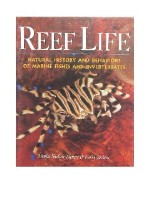Phytoplankton is a very
important food for marine organisms, because as primary
producers of essential nutrients in the oceans, phytoplankton is
crucial to the development and survival of most, if not all
marine animals at some level.
Phytoplankton are tiny floating organisms (such as unicellular algae, diatoms and dinoflagellates) which serve the same role in the food chains of the oceans as vegetation serves on land; namely small things eat them, which are in turn eaten by bigger things, and so on as the food chain progresses. Many coral reef animals such as clams and other sediment feeding mollusks, soft corals, sponges, feather duster worms, tunicates, copepods and other zooplankton (including invertebrate larvae) feed directly on phytoplankton for all or at least some of their diet. Even those that do not, such as most stony corals, rely ultimately on the nutrition gained from phytoplankton and other marine algae eaten by the zooplankton they prey on. Some essential nutrients gained from phytoplankton cannot be synthesized by animals, and are therefore extremely important components of a healthy diet.
The most important of these nutrients are the class of lipids known as long chain omega-3 fatty acids. One of the major breakthroughs in the aquaculture of marine animals was the discovery that these fatty acids were an essential part of the diet, and without them, nutritional deficiencies or arrested development are common problems.
Many reef-dwelling animals for sale in aquarium stores are sediment feeders which specialize in eating phytoplankton. The poor record of survival in aquaria for many of these animals is most likely a direct consequence of their starvation without phytoplankton being available to feed on. Even if phytoplankton is fed, it will not be of any use if it is not properly stored and in most cases these animals require live phytoplankton. For live phytoplankton to be an effective food, it must either be from actively growing cultures or refrigerated species which become dormant while retaining their nutritional value, which is not common. Most of the species of phytoplankton that are used in commercial aquaculture, such as Isochrysis, Tisochrysis and Tetraselmis are only effective if fed from actively growing cultures.
Animals which contain symbiotic zooxanthellae, such as corals and giant clams cannot gain all of their nutritional requirements from light alone. The symbiotic algae only provides sugar as a nutrient, and although sugar alone may provide 100 % of the animals energy needs it does not provide the other nutrients, such as complex fats and protein that are needed to grow, reproduce, fight off disease, repair tissue and many other needs. For example, researchers on the Great Barrier Reef in Australia showed that 75% of the phytoplankton passing over the reef was captured and eaten by giant clams (T.gigas); furthermore, juvenile clams were found to obtain 65% of their energy needs from feeding on phytoplankton rather than photosynthesis.


